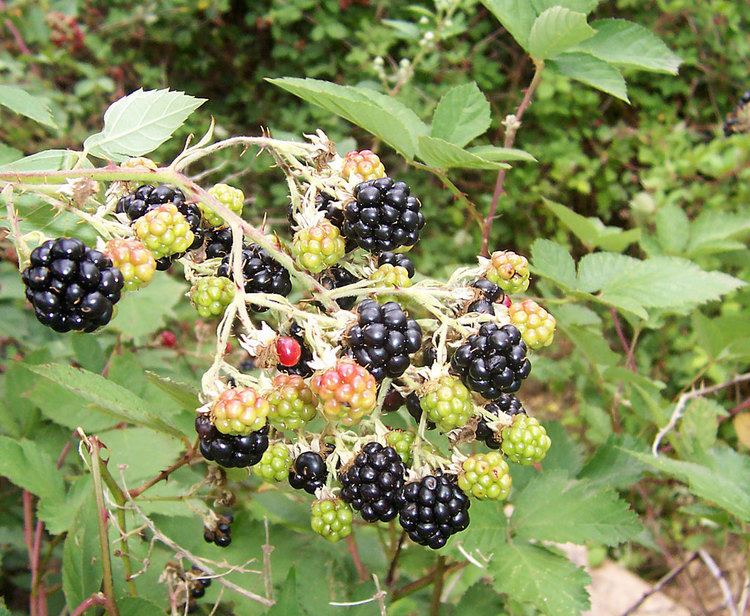 | ||
A polyphenol antioxidant is a type of antioxidant containing a polyphenolic substructure. Numbering over 4,000 distinct species, many of these compounds have antioxidant activity in vitro but are unlikely to have antioxidant roles in vivo. Rather, they may affect cell-to-cell signaling, receptor sensitivity, inflammatory enzyme activity or gene regulation.
Contents
- Evolutionary perspective
- Biochemical theory
- Potential biological consequences
- Difficulty in analyzing effects of specific chemicals
- Practical aspects of dietary polyphenol antioxidants
- Topical application of polyphenol antioxidants
- Synergistic or antagonistic effects of phenolic mixtures
- Effect in combination with another non phenolic antioxidant
- Antioxidant capacity tests
- References
Evolutionary perspective
From about 500 million years ago, freshwater and terrestrial plants slowly optimized the production of “new” endogenous antioxidants, such as ascorbic acid (vitamin C), natural phenols (including flavonoids) and polyphenols, tocopherols, etc. A few of these appeared more recently, in the last 50–200 million years, in fruits and flowers of angiosperm plants. In fact, the angiosperms (the flowering plants), the dominant type of plant today (and most of their antioxidant pigments) evolved during the late Jurassic period.
Biochemical theory
The regulation theory considers a polyphenol antioxidant’s ability to scavenge free radicals and up-regulate certain metal chelation reactions. Various reactive oxygen species, such as singlet oxygen, peroxynitrite and hydrogen peroxide, must be continually removed from cells to maintain healthy metabolic function. Diminishing the concentrations of reactive oxygen species can have several benefits possibly associated with ion transport systems and so may affect redox signaling.
The “deactivation” of oxidant species by polyphenolic antioxidants (POH) is based, with regard to food systems that are deteriorated by peroxyl radicals (R•), on the donation of hydrogen, which interrupts chain reactions:
R• + PhOH → R-H + PhO•
Phenoxyl radicals (PO•) generated according to this reaction may be stabilized through resonance and/or intramolecular hydrogen bonding, as proposed for quercetin, or combine to yield dimerisation products, thus terminating the chain reaction:
PhO• + PhO•→ PhO-OPh
Potential biological consequences
Consuming dietary polyphenols may be associated with effects in higher animal species:
Difficulty in analyzing effects of specific chemicals
It is difficult to evaluate the physiological effects of specific natural phenolic antioxidants, since such a large number of individual compounds may occur even in a single food and their fate in vivo cannot be measured. For example, over sixty different chemically distinct flavonoids are known to occur in a given red wine. The polyphenol content of wines is usually evaluated by the Folin-Ciocalteu reagent which correlates well with alternative chemical and biological procedures for determining antioxidant potential.
Other more detailed chemical research has elucidated the difficulty of isolating individual phenolic antioxidants. Because significant variation in phenolic content occurs among various brands of tea, there are possible inconsistencies among epidemiological studies implying beneficial health effects of phenolic antioxidants of green tea blends. The Oxygen Radical Absorbance Capacity (ORAC) test is a laboratory indicator of antioxidant potential in foods and dietary supplements. However, ORAC results cannot be confirmed to be physiologically applicable.
Practical aspects of dietary polyphenol antioxidants
There is debate regarding the total body absorption of dietary intake of polyphenolic compounds. While some indicate potential health effects of certain specific polyphenols, most studies demonstrate low bioavailability and rapid excretion of polyphenols, indicating their potential roles only in small concentrations in vivo. More research is needed to understand the interactions between a variety of these chemicals acting in concert within the human body. In particular there is evidence that some combinations of foods may inhibit efficient intestinal transfer of certain polyphenol antioxidants; refined sugars, for example, have been shown to impede this uptake under certain circumstances. Furthermore, caution should be exercised in attempting diets depending largely on dietary supplements as opposed to a broad array of food sources, since the quality and concentrations of beneficial chemicals in some commercial products is subject to question.
Topical application of polyphenol antioxidants
There is little evidence that reactive oxygen species play a role in the process of skin aging. The skin is exposed to various exogenous sources of oxidative stress, including ultraviolet radiation whose spectral components may be responsible for the extrinsic type of skin aging, sometimes termed photoaging. It has been shown not only that increased levels of protective low molecular weight antioxidants through a diet rich in phytochemicals, but also by direct topical dermal application of low molecular weight antioxidants, notably vitamins C and E, as well as lipoic acid, may confer protective effects against oxidative stress. However, controlled long-term studies on the efficacy of low molecular weight antioxidants in the prevention or treatment of skin aging in humans are absent.
Synergistic or antagonistic effects of phenolic mixtures
Experiments on linoleic acid subjected to 2,2′-azobis (2-amidinopropane) dihydrochloride-induced oxidation with different combinations of phenolics show that binary mixtures can lead to either a synergetic effect or to an antagonistic effect.
Antioxidant levels of purified anthocyanin extracts were much higher than expected from anthocyanin content indicating synergistic effect of anthocyanin mixtures.
While most antioxidants go directly from an active to an inactive role, emblicanins utilize a multilevel cascade of antioxidant compounds resulting in a prolongation of its antioxidant capabilities. Emblicanin A (one of the key compounds in emblicanins) aggressively reacts with free radicals. After it neutralizes a free radical, emblicanin A is transformed into emblicanin B, another antioxidant. Emblicanin B in turn also reacts with free radicals and is transformed into emblicanin oligomers. This makes emblicanins one of the best free radical scavenging antioxidant.
Effect in combination with another non-phenolic antioxidant
Experiments with binary mixtures of natural phenolic antioxidants with a non-phenolic antioxidant -ascorbic acid- show that phenolics exhibit antagonism when combined with this latter compound. This is described as to the regenerating ability of the most efficient antioxidant at the expense of the less efficient one.
Nevertheless, experiments led with hydroxytyrosol, a major constituent of olive oil and α-tocopherol show a synergistic effect.
